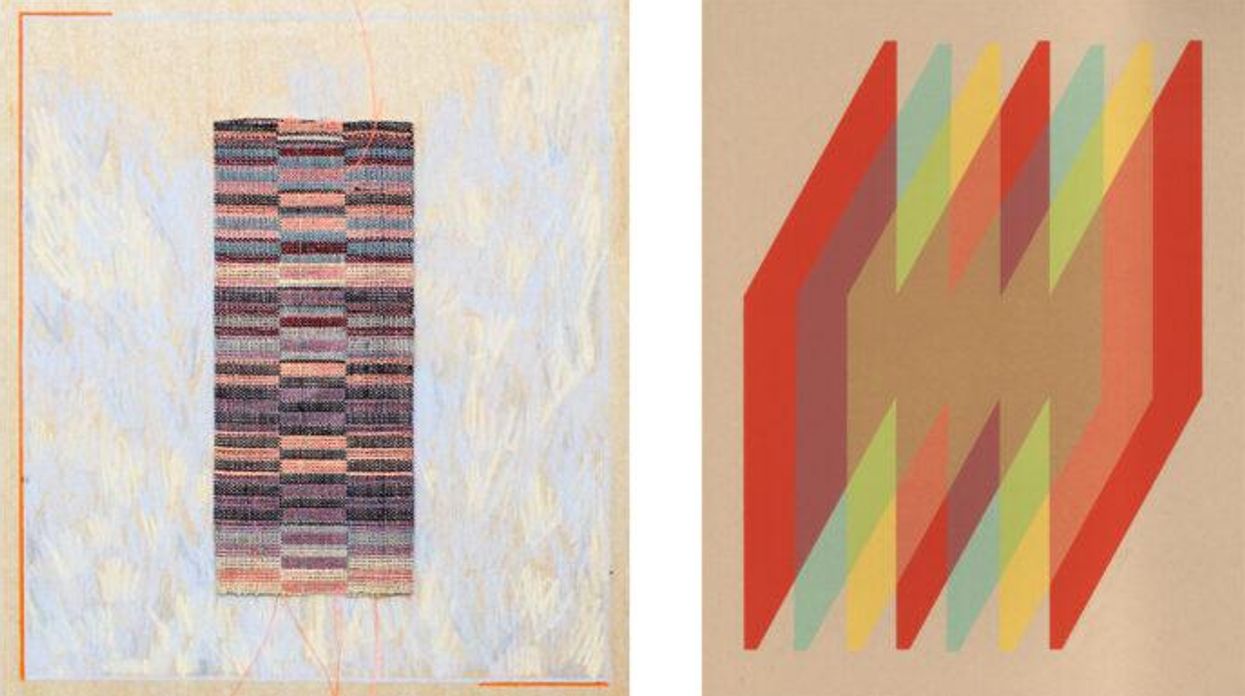This Weekend: Meet the Creators Behind ‘Music for the Eyes’ at Still-New Artspace

Works by Koehn and Pozo
One could describe all of the work in Superimpositions as “non-representational,” but shape and color is a powerful combination, and inevitably triggers a concrete image in the mind’s eye of the viewer. Most of the pieces on display are small, and are thoughtfully installed throughout The Alta Arts’ unique, warehouse-like space. “You might walk through and think all of the art was done by one person,” says Pozo, “but I don’t know if you could tell which one of us it would have been!”
Duarte and Pozo, born in Venezuela and Chile, respectively, are both architects who use printmaking to let their imaginations run a bit wild. Pozo is also a self-taught musician, and believes rhythm is the thread connecting his work as an architect and creative output as a musician and a visual artist. “We use rhythm in architecture to define the repetition of elements in a musical way,” explains Pozo, “which is tied to the way I use sound.”

'Assembler' by Pozo

'Lepanto 2' by Pozo

Alta Arts in Gulfton
When Pozo decided to dive into the art of screen printing, he contacted Carlos Hernandez, co-founder of the artist collective and print studio Burning Bones Press. “Carlos pretty much taught me the system I still use,” says Pozo, who at age 55 is refreshingly unpretentious in his desire to learn and synthesize so many different creative mediums. “Architects are pretty full of themselves,” he laughs, “so we kind of think we can do everything.”
Maybe he’s not kidding. This year, in addition to holding down his day-job, making prints and creating digital art, Pozo found time to record Dystopian Gates, a CD of dark ambient instrumental music inspired by the “little imaginary structures” he creates using digital modeling. Dystopian Gates will be released by the Fort Worth-based independent label Dada Drumming later this month.
Though not an architect, Koehn is also influenced by rhythms of Houston’s ever-shifting urban landscape, and occasionally includes materials found on construction sites to augment her installations. But the close-knit patterns Koehn creates using both printing and weaving techniques also call to mind the narrow-strip textiles or “country cloth” of West Africa, Brazil and the Southern United States, patterns which in turn mirror downtown Houston’s strange and distinctive skyline. But that’s just one tangent to consider. Taking the time to navigate Koehn’s scaled-down environments yields one surprise after another.
And after walking through and taking in the colorful shapes, shades and layers of Superimpositions, Houstonians may never look at the city the same way again.































